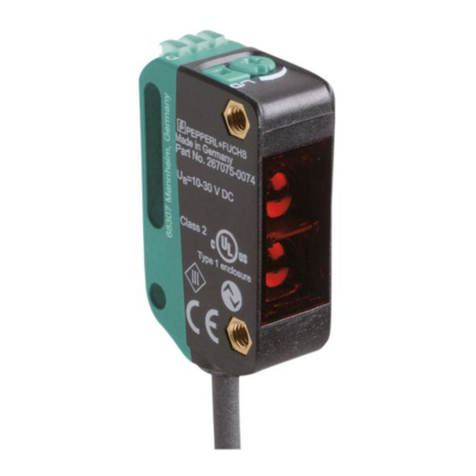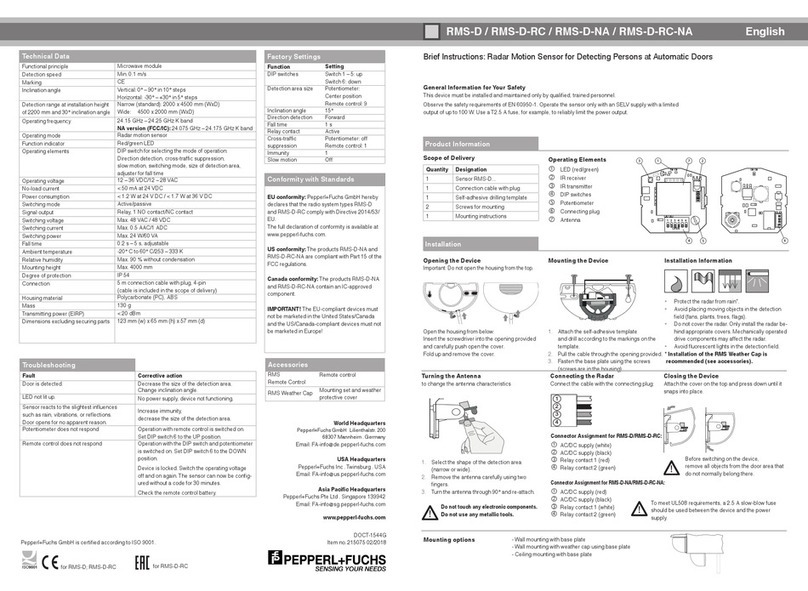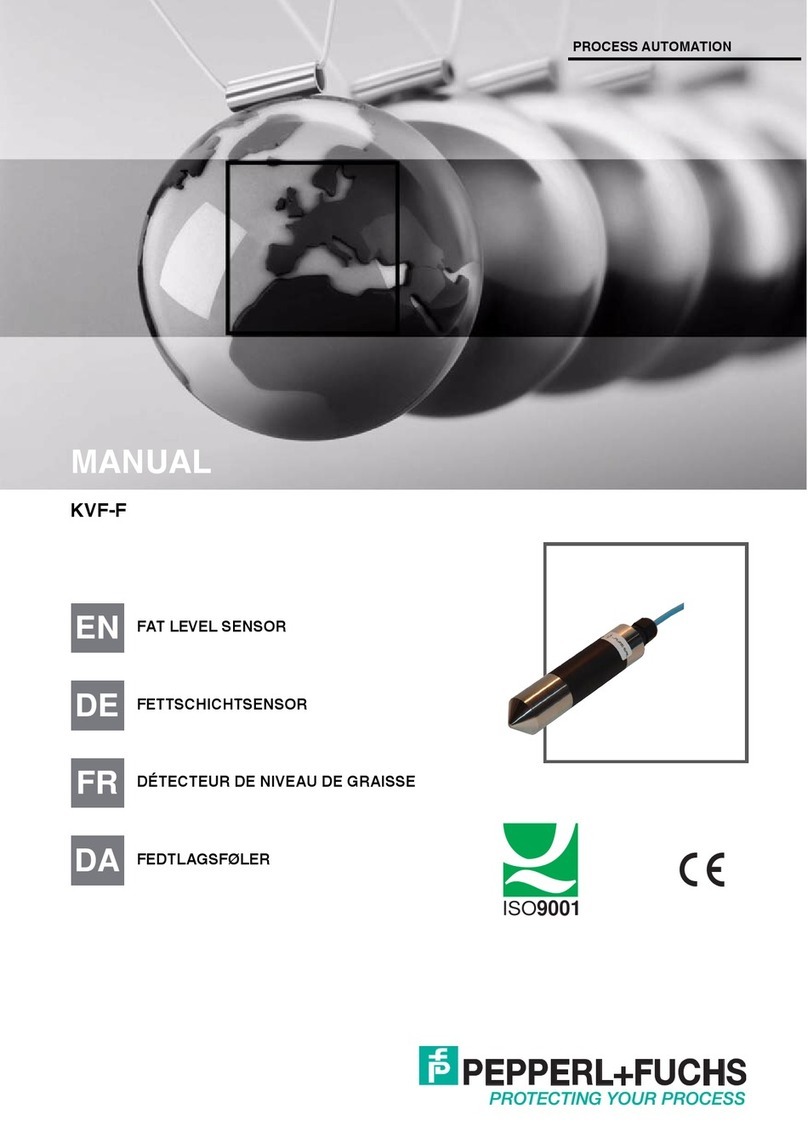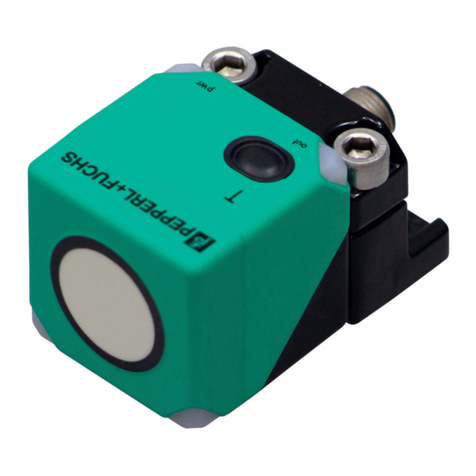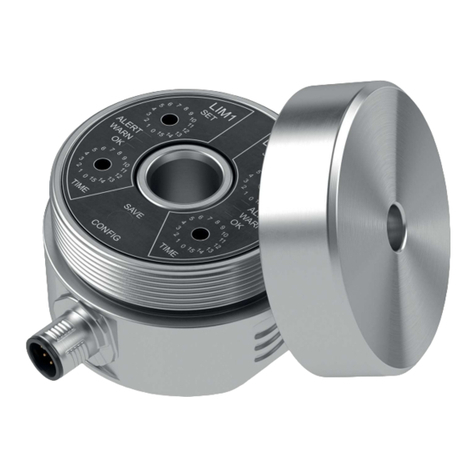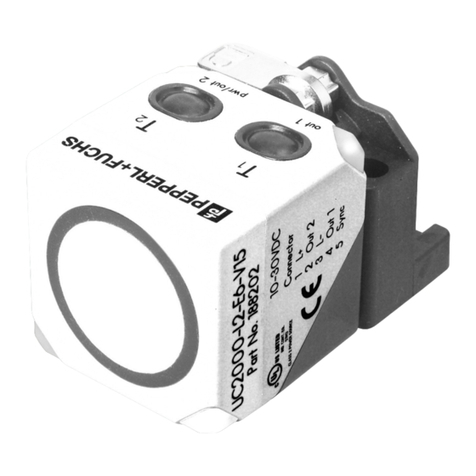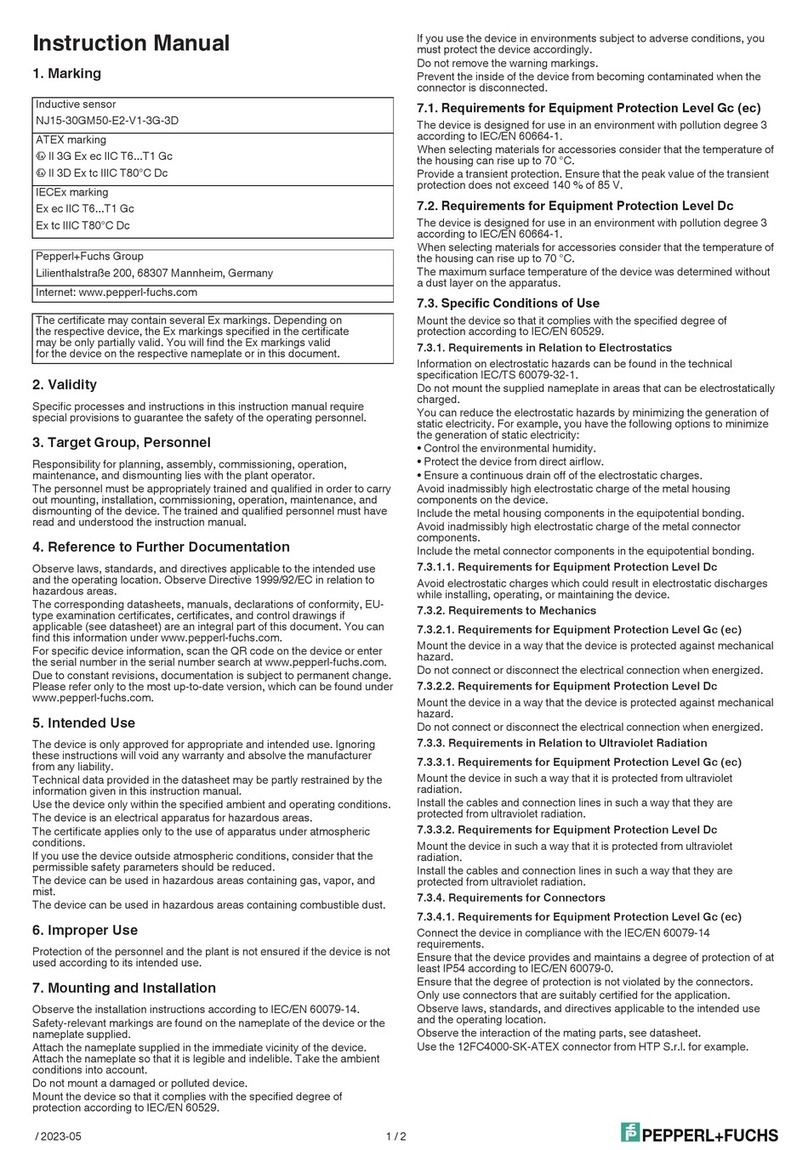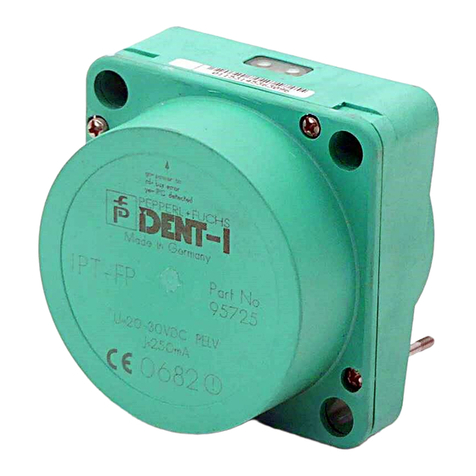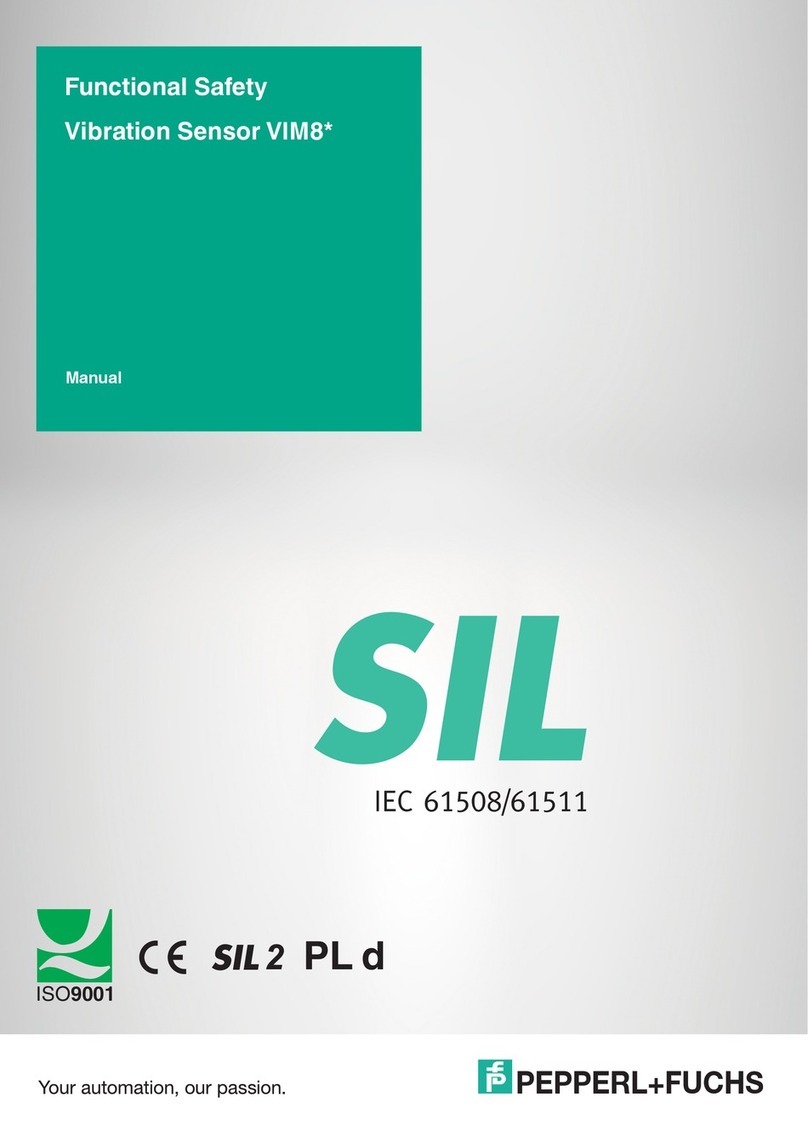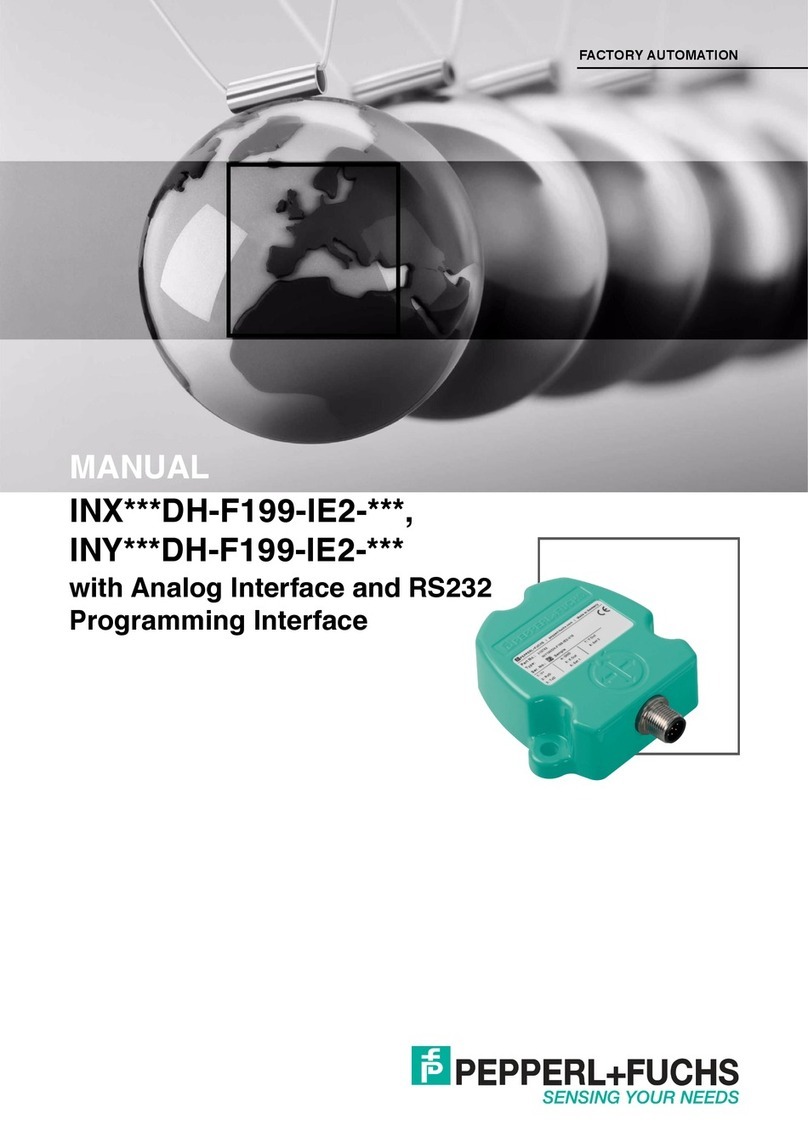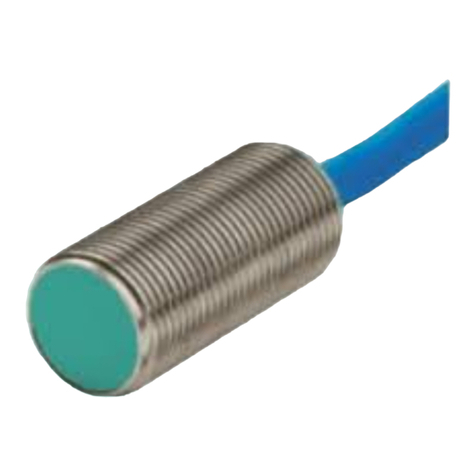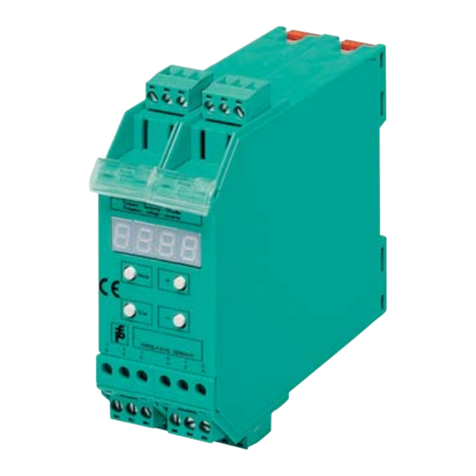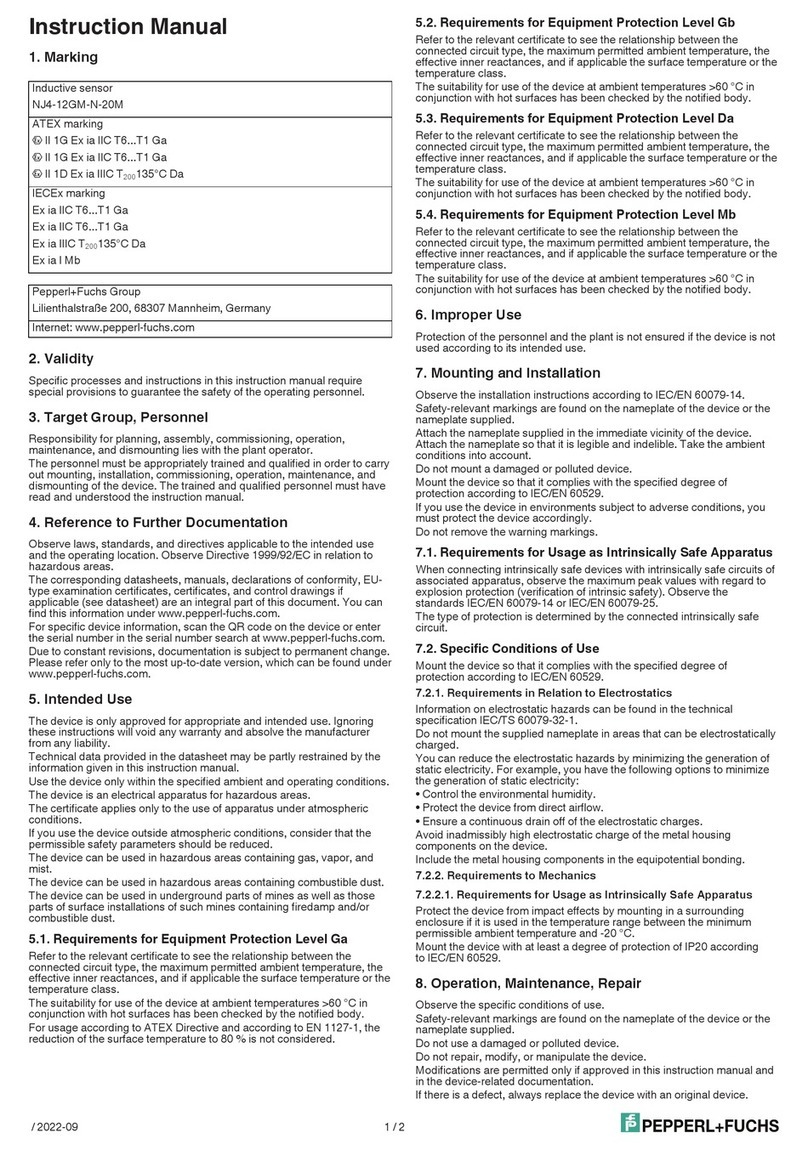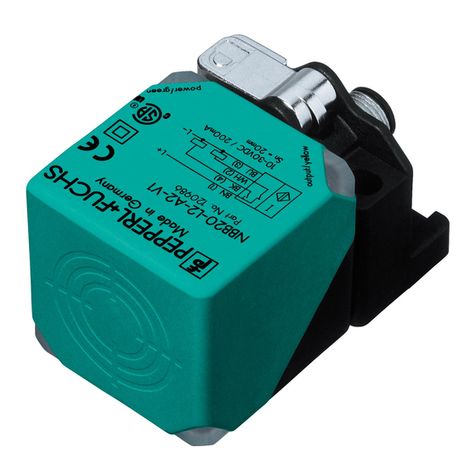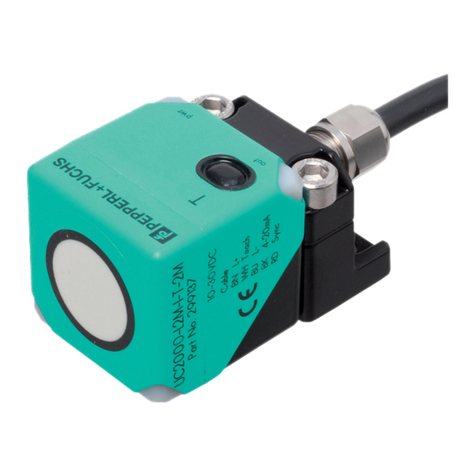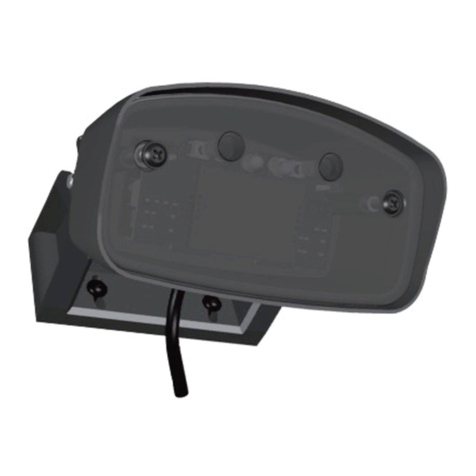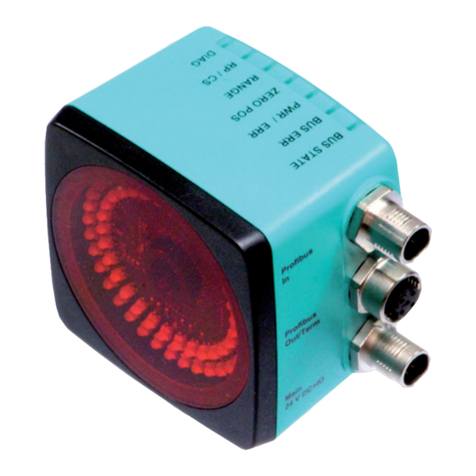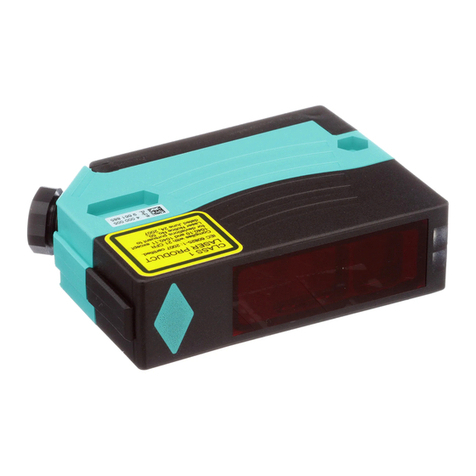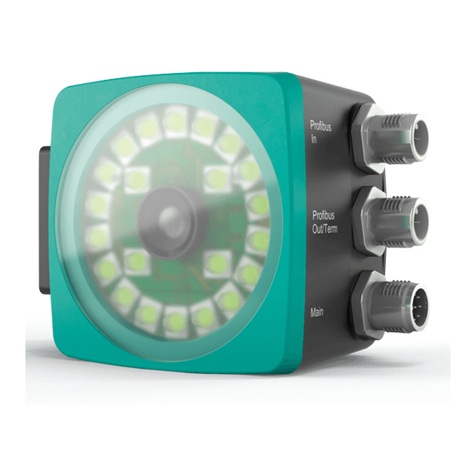
Germany: +49 621 776 4411Pepperl+Fuchs Group
Refer to “General Notes Relating to Pepperl+Fuchs Product Information”.
USA: +1 330 486 0001 Singapore: +65 6779 9091
fa-info@de.pepperl-fuchs.com
1
Ultrasonic sensor UC4000-L2M-E6-T-2M
Release date: 2018-10-25 11:49 Date of issue: 2018-10-25 299132_eng.xml
Technical data
General specifications
Sensing range 200 ... 4000 mm
Adjustment range 240 ... 4000 mm
Dead band 0 ... 200 mm
Standard target plate 100 mm x 100 mm
Transducer frequency approx. 85 kHz
Response delay minimum : 110 ms
factory setting: 280 ms
Indicators/operating means
LED green Operating display
LED yellow 1 switching state switch output 1
LED yellow 2 switching state switch output 2
LED red error
Electrical specifications
Operating voltage UB10 ... 30 V DC , ripple 10 %SS
No-load supply current I0≤50 mA
Interface
Interface type Serial interface (programming adapter required)
9600 BPS, no parity, 8 data bits, 1 stop bit
Input/Output
Input/output type 1 synchronization connection, bidirectional
0 Level 0 ... 1 V
1 Level 4 V ... UB
Input impedance > 12 kΩ
Output rated operating current < 12 mA
Pulse length 0.5 ... 300 ms (level 1)
Pulse interval ≥62.5 ms (level 0)
Synchronization frequency
Common mode operation ≤16 Hz
Multiplex operation ≤17 Hz / n , n = number of sensors , n ≤10
(factory setting: n = 5 )
Output
Output type 2 switch outputs PNP, NO/NC, programmable
Rated operating current Ie200 mA , short-circuit/overload protected
Voltage drop Ud≤2 V
Repeat accuracy ≤0.1 % of full-scale value
Switching frequency f ≤2.8 Hz
Range hysteresis H programmable , preset to 1 mm
Temperature influence < 1.5 % of full-scale value
Ambient conditions
Ambient temperature -40 ... 70 °C (-40 ... 158 °F)
Storage temperature -40 ... 85 °C (-40 ... 185 °F)
Mechanical specifications
Connection type cable , 5-pin
Degree of protection IP67
Material
Housing PA-GF35
Cable PUR
Transducer epoxy resin/hollow glass sphere mixture; polyurethane foam
Cable
Sheath diameter 7.25 mm
Bending radius > 37.3 mm , fixed
> 74.7 mm , moving
Core cross-section 5 x 0.82 mm2
Length L 2 m
Mass 355 g
Factory settings
Output 1 near switch point: 240 mm
far switch point: 4000 mm
output function: Window mode
output behavior: NO contact
Output 2 near switch point: 500 mm
far switch point: 2000 mm
output function: Window mode
output behavior: NO contact
Beam width wide
Evaluation procedure averaging (MxN)
M = 5
N = 2
General information
Supplementary information Switch settings of the external programming adapter:
"output load": pull-down
"output logic": inv
Compliance with standards and
directives
Standard conformity
Standards EN 60947-5-2:2007+A1:2012
IEC 60947-5-2:2007 + A1:2012
Approvals and certificates
CCC approval CCC approval / marking not required for products rated ≤36 V
Model Number
UC4000-L2M-E6-T-2M
Single head system
Features
• Extended temperature range
•Cableconnection
•Ruggedmetalbase
• Sensor head bidirectional and
rotatable
• Function indicators visible from all
directions
• Selectable sound lobe width
• Programmable
Diagrams
0 1000 2000 3000 4000 5000 6000
2000
1500
1000
500
0
-500
-1000
-1500
X
Y
Characteristic response curve
Distance X [mm]
Distance Y [mm]
flat surface 100 mm x 100 mm
round bar, Ø 25 mm
wide sound lobe
narrow sound lobe
